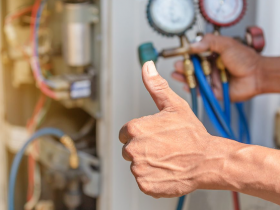By Sue Poremba
Sue Poremba is a freelance writer focusing primarily on security and technology issues and occasionally blogs for Rackspace Hosting.
Historically, data center cooling focused on cooling an entire room. Now, the focus is much more on providing only the correct volume of air, directly to the server at a low enough temperature (typically 78 F) to avoid the increased energy consumption of sped-up server fans. Heat cancellation or heat rejection methods, such as rear-door heat exchangers, focus on removing heat as it comes off the server, preventing room temperatures from rising. Application considerations are a major determinant in deciding which method to use
One of the main performance issues with traditional data center architectures is congestion from complicated applications and unpredictable data flow. The problem is the tendency to over-provision connectivity, contributing to more cooling demands.
Atchison Frazer, Chief Marketing Officer of Gnodal Ltd., a company dedicated to developing more efficient data centers, explained how to confront the problem. “What is a needed is a more extreme performance capability from a revolutionary architectural design – think ‘maverick fabric’ – that eliminates network congestion,” he said.
Instituting new technologies can reduce energy consumption, while also improving cooling system reliability.
The most common technologies employed today focus on energy efficiency, especially at load conditions and making savings during lower ambient temperatures, according to Ron Spangler, product marketing manager at Liebert Precision Cooling. Variable speed fans, in the form of variable frequency drives, or EC (electrically commutated) motors are popular methods for varying air volume. In addition, variable capacity compressors, such as Digital Scroll or cylinder unloading compressors are popular. Measuring airflow and temperature requirements near the servers is becoming more popular than cooling an entire room.
“Economizers are being employed in order to save energy during colder outdoor ambient periods of the year,” Spangler said. “However, there is also a need to maintain system reliability when switching to economizer mode or when operating in economizer mode. Water-side economizers enable a chilled water plant to operate less, or even idle when the ambient temperature is cool enough to do so. Outside air can be brought directly into the data center, but care must be given to maintain damper systems that can be prone to failure, or mis-operation.”
Spangler pointed out that outside air must be filtered for particulates, and consideration should be given to preventing gaseous contamination into the data center.
There are also newer systems being employed that bring the cooling or heat rejection close to the servers. This method reduces the amount of air circulated in the data center, thus reducing the fan energy required to circulate air throughout the room.
In the end, when installing the latest in data center cooling technologies, it still boils down to proper evaluation and the selection of infrastructure devices that dramatically reduce the need for cooling.

























